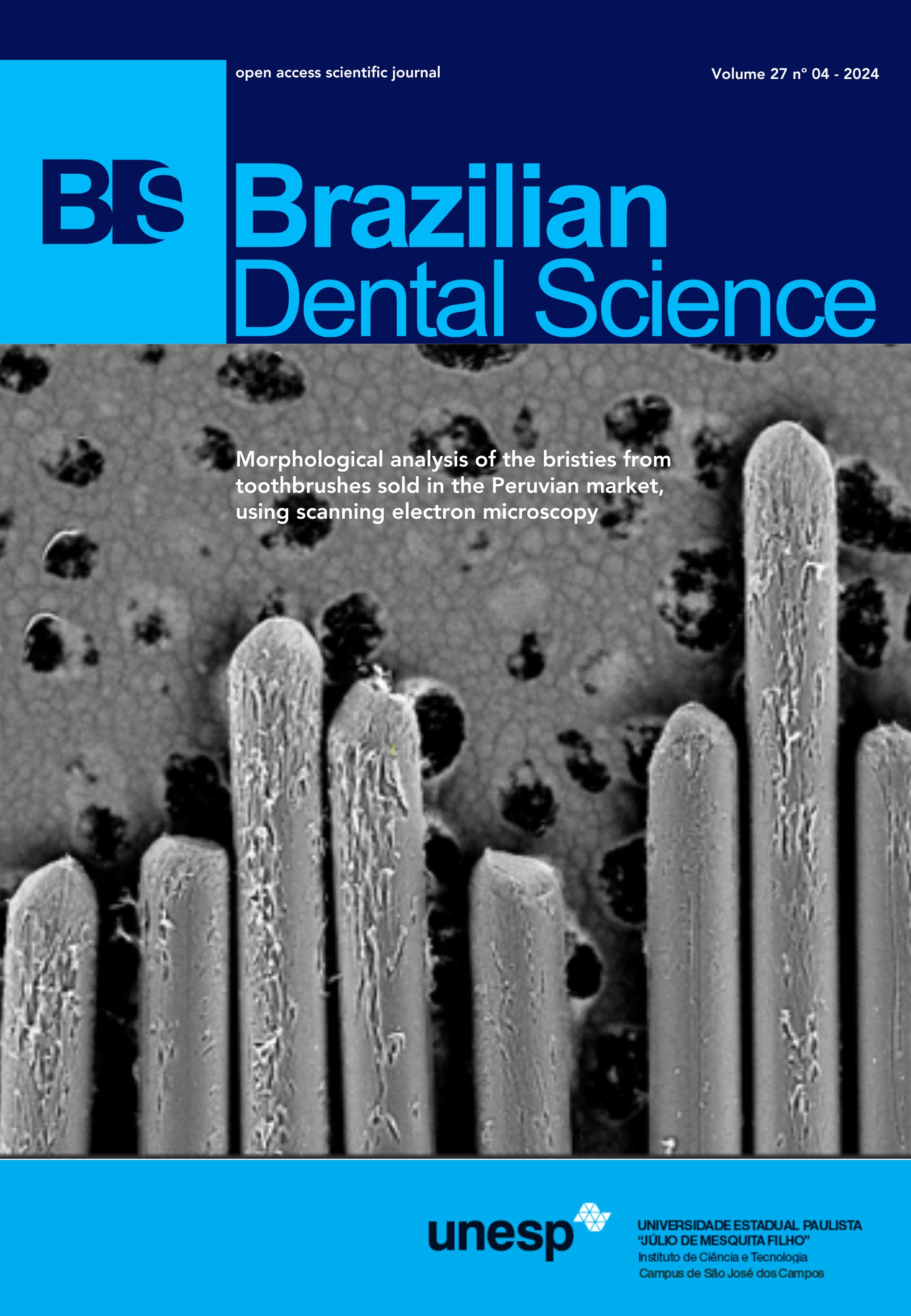Morphological analysis of the bristles from toothbrushes sold in the Peruvian market, using scanning electron microscopy
DOI:
https://doi.org/10.4322/bds.2024.e4503Abstract
Objective: To analyze, using scanning electron microscopy, the morphological characteristics of the bristle filaments of toothbrushes marketed in Peru. Material and Methods: Images obtained through scanning electron microscopy of 23 adult toothbrushes with nylon bristles (621 bristles) were used, and the morphology of their filament tips was evaluated using the Silverstone and Featherstone classification modified by Reiter and Wetzel and classified as Acceptable or Non-acceptable. Results: Of the bristles evaluated, 169 (27.2%) were classified as acceptable, while 452 (72.8%) were non-acceptable. Among the toothbrushes analyzed, four exhibited more than 50% acceptable bristles, including one with 100% acceptability. Conversely, another four brushes displayed 100% non-acceptable bristles. Conclusion: The results demonstrate a high frequency of non-acceptable bristles, with a ratio 2.5 times greater than the acceptable ones. This variability indicates a lack of uniformity in manufacturing standards across brands, emphasizing the urgency to implement stricter regulations to ensure the quality and safety of these crucial oral hygiene instruments.
KEYWORDS
Dental and oral hygiene products; Oral hygiene; Oral self-care devices; Personal hygiene products; Toothbrushing.
Downloads
Published
How to Cite
Issue
Section
License
Brazilian Dental Science uses the Creative Commons (CC-BY 4.0) license, thus preserving the integrity of articles in an open access environment. The journal allows the author to retain publishing rights without restrictions.
=================




























